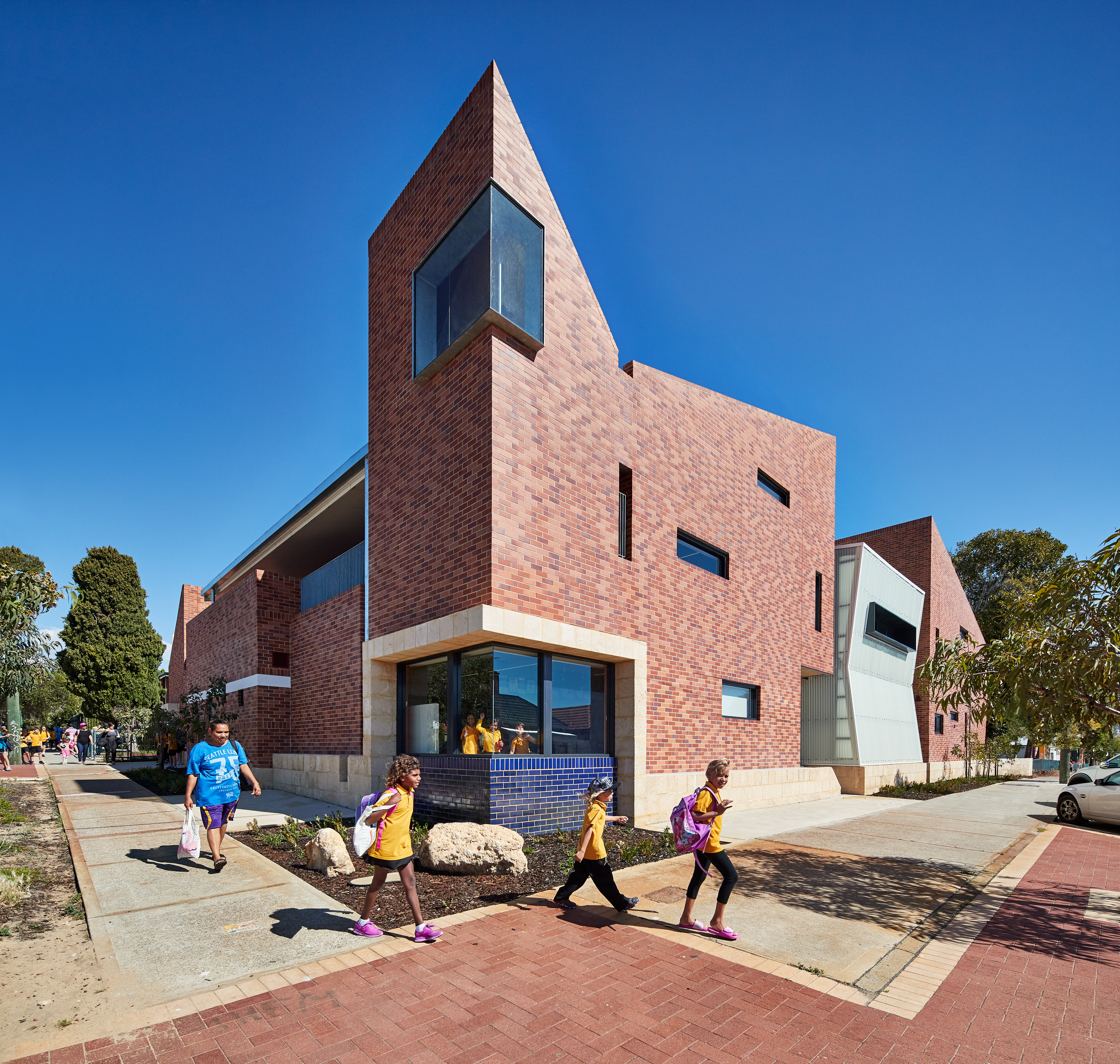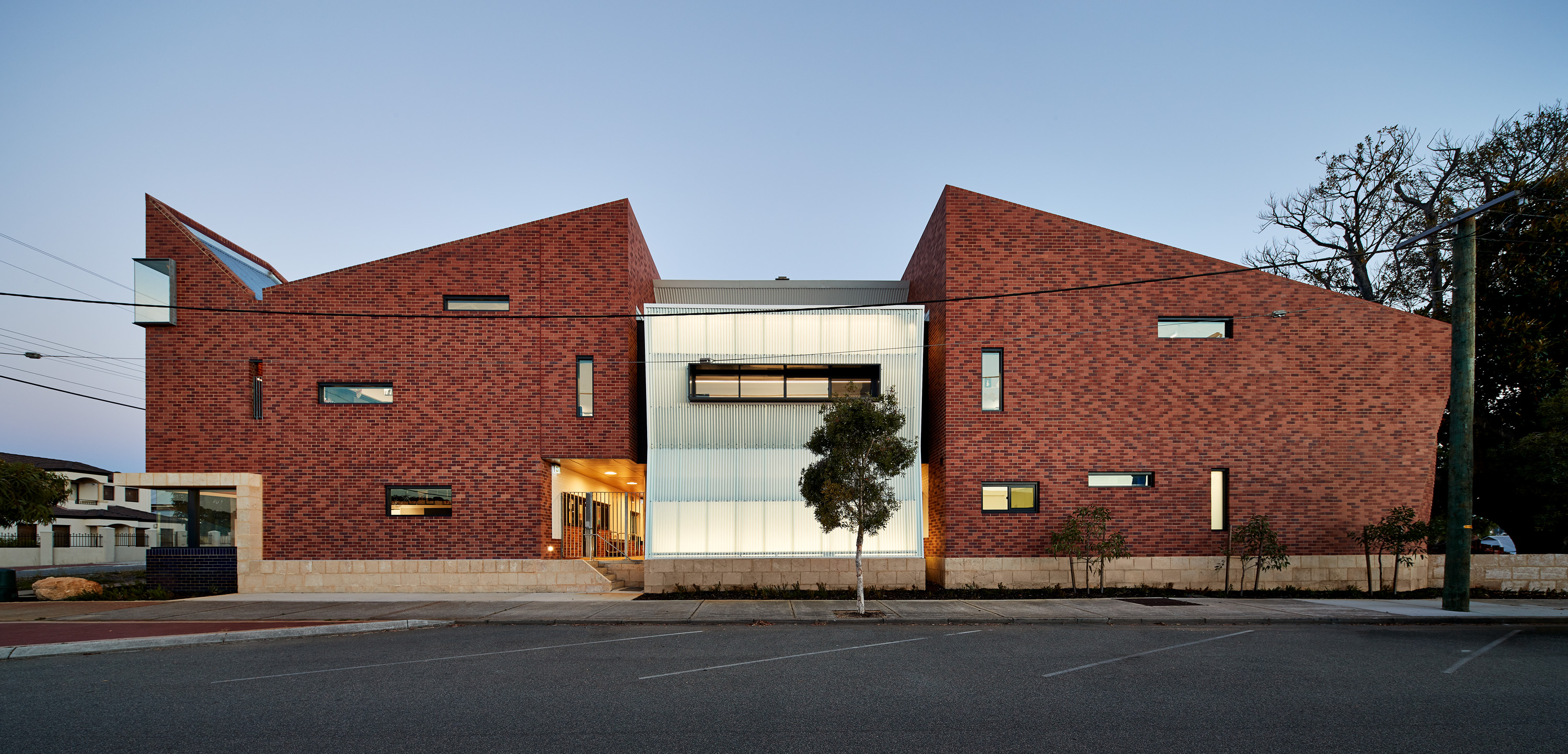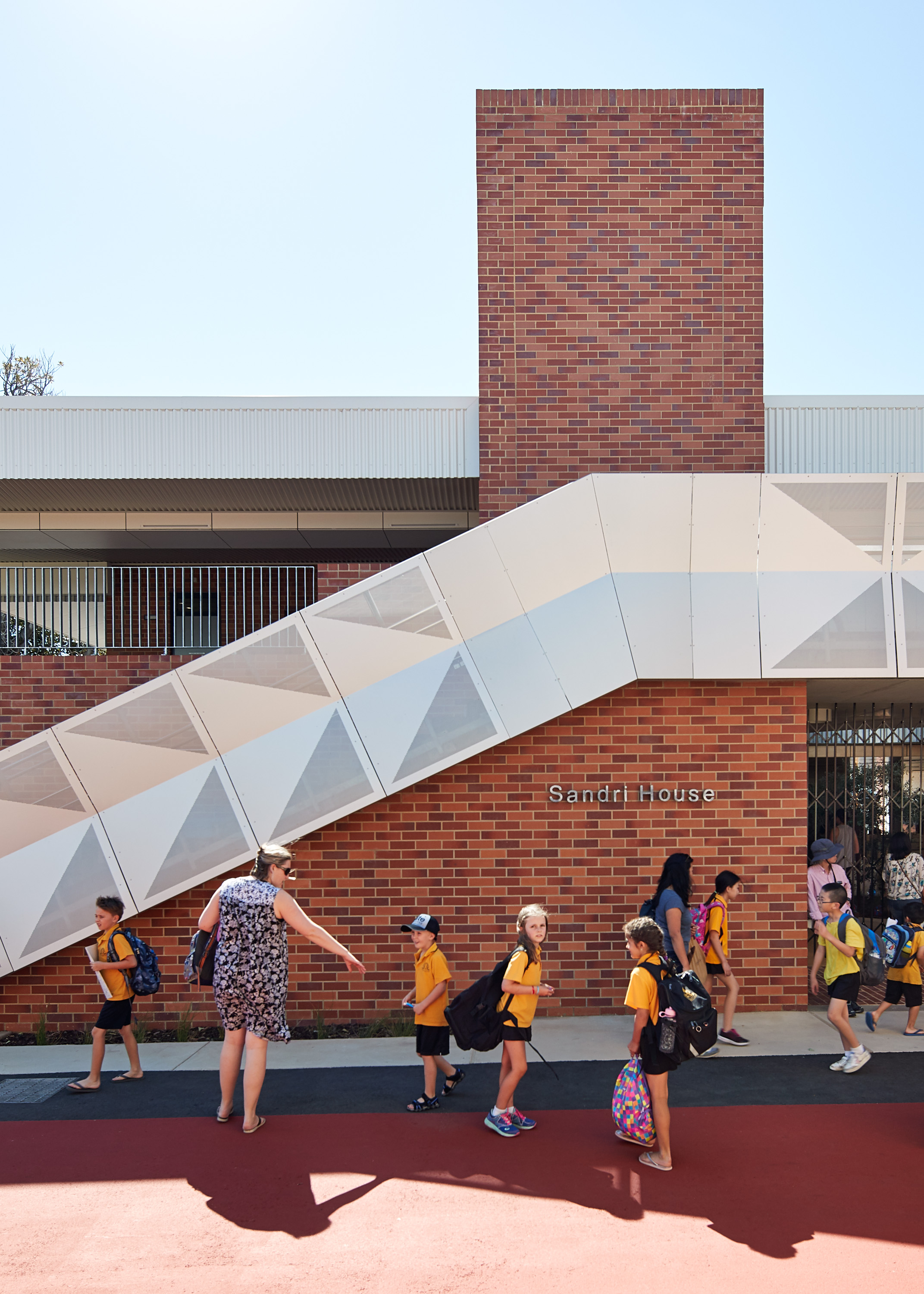
From the architect:
The new Highgate Primary School teaching classrooms immerse the students in a creative environment that is anchored in to the surrounding context, creating new relationships and ways of seeing their environment. The building offers a variety of scales of experience from distant views to intimate classroom experiences, and acts as a microcosm of the city that responds to the diverse and multi-cultural students, allowing occupants to find a place and space of preference.
The school site is on the state heritage list. Iredale perdersen hook initiated a whole of site school study to determine the location that would minimise impact to heritage buildings, recreation area and vistas. We created a strong urban gesture by bringing the school to the street corner and redefining how one enters the school.
The corner tower is at the intersection of city, religious, industrial and tree towers, responding to this intersection with both tower and large urban window. The classroom activities now form part of the street experience and vice versa.
A vista to the city is maintained from Lincoln Street, allowing breathing room to the adjacent heritage building. An activated edge via the double accessed stair forms a new elevated vista to the city and heritage building.
Materials and forms reference the heritage buildings without imitation and constraint. A podium of stepping natural limestone, a blend of four red bricks, a small band of white painted render and a roof of galvanised steel fold and pitch in continuous dialogue. A strange intervention of backlit polycarbonate responds to the backlit stained glass windows of adjacent small scale residences, a figure that changes between day and night.

The design adheres to the Department's standard pattern classroom plans. The section is precisely extruded, responding to the street and site context, but also providing entry towers to classrooms and greater height. The extruded and perforated section creates multiple dialogues between the upper and lower levels, allowing younger students to see their next place of progression through the school years.
Time is mapped in the north-facing urban corners, where three bands of bright colour capture the winter solstice in the morning, midday and afternoon. A circular ceiling motif in the outdoor teaching space includes a north-aligned light. A circular entry pattern and purple line on the wall and floor mark the beginning and end of the school year.
Colours were developed as an educational tool relating to the first occupants, the Whadjuk people, who live by the six seasons. Each of the six seasons represents and explains the seasonal changes we see annually.
The response from the community and school has been overwhelming with parents eagerly waiting and hoping their children will occupy these spaces. The teachers have embraced the spaces, finding multiple ways of inhabiting them.
The school was built for less than the standard pattern primary school project, demonstrating that diversity, individuality and complexity of experience can be achieved within reduced budget parameters.

SUSTAINABILITY FEATURES
This design is unique in its approach to teaching sustainability to occupants through the built environment. An awareness of the environment is created through the mapping and capturing of direct sunlight, the winter solstice, the beginning and end of the school year, the direction of north, the use of natural materials, a halo of light that filters from above to deep in the lower level, the trees that grow with the children, materials that endure and weather well with time and the educational use of colour that tells stories of the Nyoongar six seasons.
These are all possibilities that have been enthusiastically embraced by the occupants.
Naturally we have the other expected systems; night purging, photovoltaic cells with visible monitors, minimisation of artificial lighting through natural lighting, generous undercover outdoor learning spaces, use of low VOC and white paint to illuminate spaces and durable, low embodied materials.

